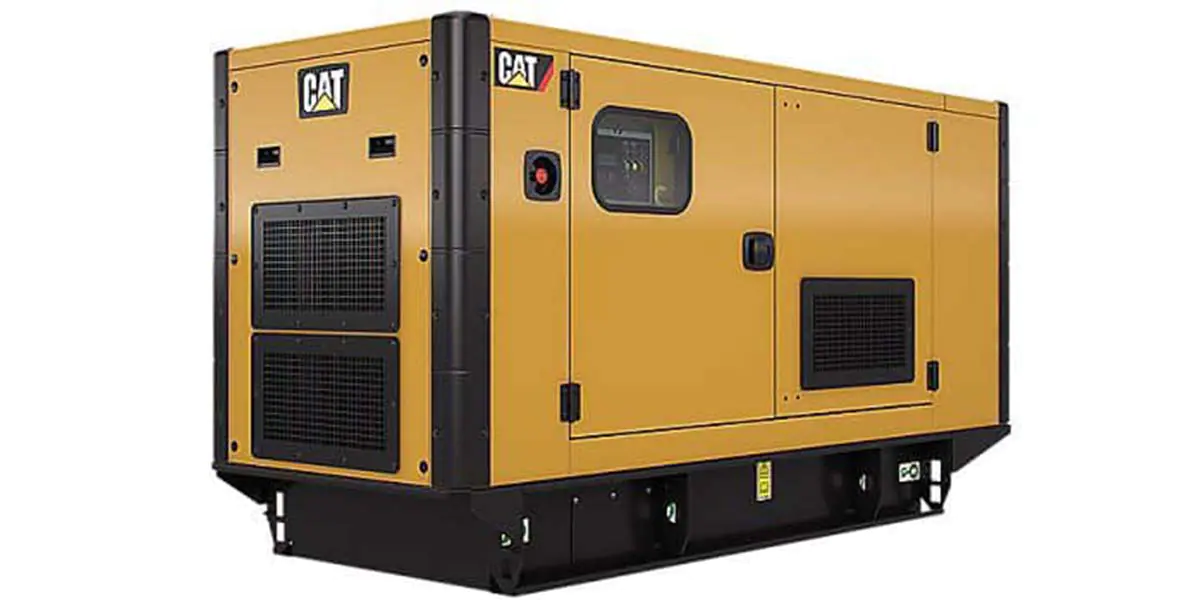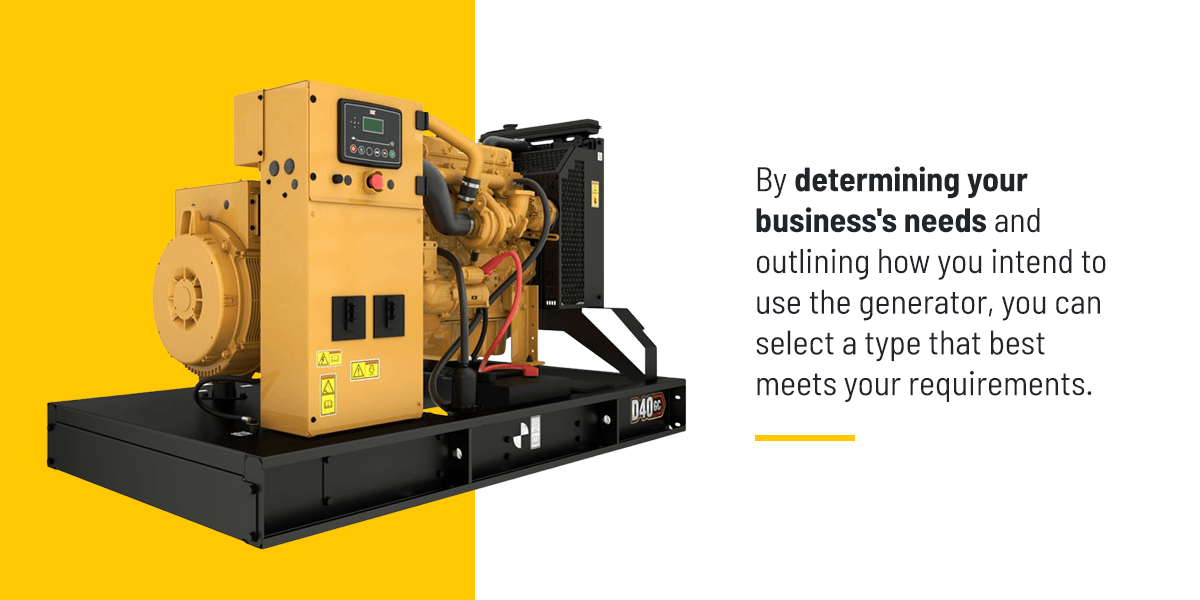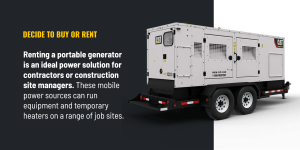
Picking the Right Power Generator for Your Business
Category: Equipment and Solutions
A GUIDE TO ENSURING YOU HAVE THE RIGHT SIZE GENERATOR FOR YOUR BUSINESS.
You understand that your company needs a reliable backup and primary power source to protect your assets and maximize productivity, but do you know how to pick the right size unit to support your needs? Having an understanding of industrial and commercial generator sizing is critical for helping you select the most efficient options and avoiding the consequences of having a system that lets you down when you need it the most. Installing the wrong size power source not only guarantees dependable performance with minimal maintenance requirements, but it also reduces the risk of system failures, property damage and employee safety concerns.
Whether you work in retail, manufacturing, commercial or industrial, many factors go into identifying your generator size choices. While in some cases it will be necessary to consult with a trained power system professional or certified electrician to be sure what size generator will meet your needs, the following tips and resources provide insight into the key steps involved in the process to help get you started with how to choose a generator.
Determine Your Business’s Needs
The first step to choosing the right generator for your company is to understand why you need one. By determining your business’s needs and outlining how you intend to use the generator, you can select a type that best meets your requirements.
The three main categories of generators are:
- Emergency: Emergency generators are power sources for essential systems that act as the lifeline to your operations. These generators can’t keep your whole facility running during an outage, but they can temporarily power emergency lights, fire alarms and other safety systems.
- Standby: A standby generator powers your entire facility in the event of an outage. These independent power sources will switch on when they detect failure of the primary energy source. What’s more, standby generators can kick in with few delays to minimize disruptions.
- Primary: A primary generator is any generator that acts as the main power source for a facility. Some businesses use a generator as their primary power source to save on utility bills and reduce their carbon footprint. Alternatively, you may choose a primary generator if your business is too far away from a power grid or if the local grid can’t meet your power requirements.
ASSESS YOUR POWER REQUIREMENTS
Generators come in a wide range of sizes and configurations based on your unique requirements and a variety of other deciding factors. A crucial step in knowing what size generator you need for your business is determining how and where the equipment is going to be used and the amount of power and wattage required to support all your applications. Whether you need a solution for maintaining productivity at an industrial plant in case of a blackout or portable gen set for industrial tools and remote operations, make a list of everything the generator will need to power at any given time.
Calculating your total kVA and kW power requirements will narrow down generator size choices into a specific capacity range and help you decide how big a generator you need. When generator sizing for certain commercial and retail applications, a square foot measurement system is often used to factor the power requirements using the following equations:
- Retail: kW = 50 kW + 10 watts/sq. ft.
- Commercial: kW = 30 kW + 5 watts/sq. ft.
DEFINE YOUR SITE CONDITIONS
Now that you have a handle on the range of powering ratings and load capacity for your operation, it’s time to consider site conditions and generator options. Ask yourself:
- Do I need a gen set for standby, primary or emergency power?
- Am I looking for a portable or stationary solution?
- Does my facility have a limited amount of space or environmental concerns?
- Do my power requirements call for a single-phase or three-phase unit?
It’s necessary to know the generator set duty, fuel type, electrical system connection and supply rating to determine the most efficient model. Additional options to consider include ambient and altitude measures, the capacity for potential expansion, emissions and voltage regulations.
Decide on a Generator Type
Once you have an understanding of how you’ll be using your generator, the power capabilities you require and your site conditions, you can focus on selecting the right machine. The two main options are portable and stationary generators. Most businesses operate out of one facility, so a static generator is convenient and cost-effective. Stationary options can also generate more power, making them ideal if you want a standby or primary energy source.
Portable generators have lower power capabilities than static models and are mainly used as mobile power sources to run equipment on sites without grid access. If you need a generator for a temporary project or event, you can rent portable options for numerous applications.
UTILIZE AVAILABLE RESOURCES
While it’s possible to size a commercial backup generator for your business on your own, it becomes increasingly complex as your power requirements become more significant. Thankfully, there are many viable ways to get the information and support needed to make accurate assessments. Among the most useful online tools for simple sizing generator sets is the Cat® Electric Power SpecSizer. All you need to do is register for a Caterpillar® CWS ID to access this web application designed to help identify generator size choices and view product availability.
Decide to Buy or Rent
Choosing between renting or buying a business generator will largely depend on your business’s power requirements. While purchasing a new generator has steeper initial costs, it’s your only option if you need a stationary machine. If you work in one location and require a lot of power, buying a generator is the best decision.
Renting a portable generator is an ideal power solution for contractors or construction site managers. These mobile power sources can run equipment and temporary heaters on a range of job sites.
Partner With NMC Cat
If you’re in the process of sizing commercial, backup or industrial generators for your business, the experts at NMC Cat can help. Our power system team is here to assist in assessing your needs and finding the best solutions within our extensive inventory. Already decided on the perfect generator for your project? We’re your one-stop shop for reliable generator rentals that are perfect for numerous industrial applications. Contact us for more details and to speak with a representative about your projects today.


